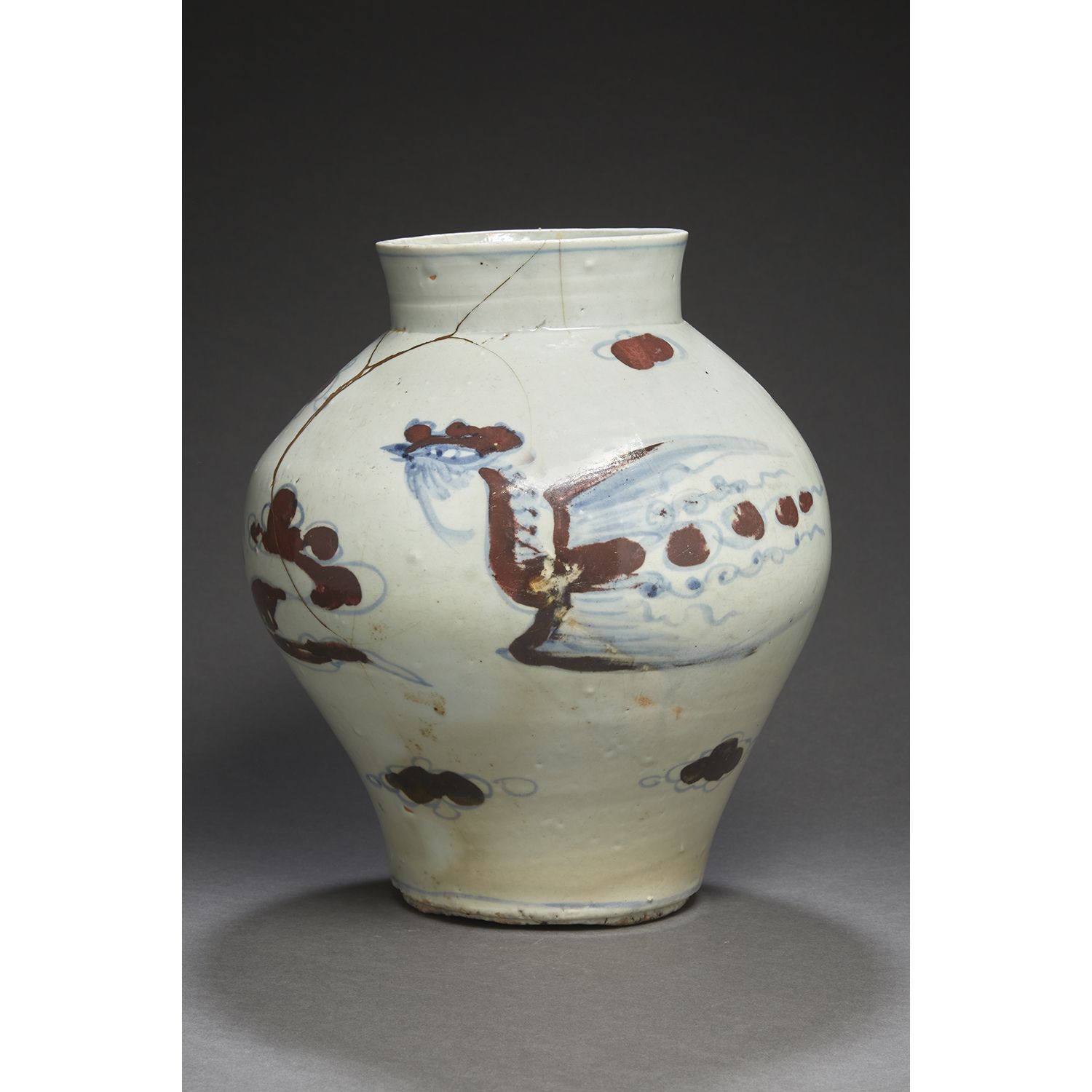Description
JARRE in porcelain and blue white and red copper enamels, representing two phoenixes flying among stylized clouds, symbolizing a wish for long life. (Restorations to the kintsugi gold, unrestored cracks to the neck-one of 3.8 CM and 0.5 CM on the opening, another of 1.5 CM and through and 0.5 CM on the opening, another of 1.6 CM through, and the last one of 1.2 CM, as well as other small cracks on the opening, unrestored crack on the belly) Korea, Choseon period, 19th century. AN IRON RED, BLUE AND WHITE GLAZED WITH PHENIX DECORATED PORCELAIN JAR, KOREA, 19TH CENTURY. HEIGHT. 27,5 CM (10 13/16 IN.) NOTE White porcelain, fired at very high temperatures, was first produced in Korea during the Koryo Dynasty (918-1392). This jar with a simple white base was popular with Korean Confucian philosophers because it carried a connotation of purity and honesty. However, porcelains painted under the glaze with iron brown or, as in this case, copper red and cobalt blue, were also popular. The combination of copper red, white and cobalt blue is considered the most cheerful and colorful combination of Choseon-era ceramics. - Similar object in the collection of the Victoria and Albert Museum, reference C.75-1930. - Similar object in the collection of the National Museum of Korea, reference Deoksu 3829.
355
JARRE in porcelain and blue white and red copper enamels, representing two phoenixes flying among stylized clouds, symbolizing a wish for long life. (Restorations to the kintsugi gold, unrestored cracks to the neck-one of 3.8 CM and 0.5 CM on the opening, another of 1.5 CM and through and 0.5 CM on the opening, another of 1.6 CM through, and the last one of 1.2 CM, as well as other small cracks on the opening, unrestored crack on the belly) Korea, Choseon period, 19th century. AN IRON RED, BLUE AND WHITE GLAZED WITH PHENIX DECORATED PORCELAIN JAR, KOREA, 19TH CENTURY. HEIGHT. 27,5 CM (10 13/16 IN.) NOTE White porcelain, fired at very high temperatures, was first produced in Korea during the Koryo Dynasty (918-1392). This jar with a simple white base was popular with Korean Confucian philosophers because it carried a connotation of purity and honesty. However, porcelains painted under the glaze with iron brown or, as in this case, copper red and cobalt blue, were also popular. The combination of copper red, white and cobalt blue is considered the most cheerful and colorful combination of Choseon-era ceramics. - Similar object in the collection of the Victoria and Albert Museum, reference C.75-1930. - Similar object in the collection of the National Museum of Korea, reference Deoksu 3829.
